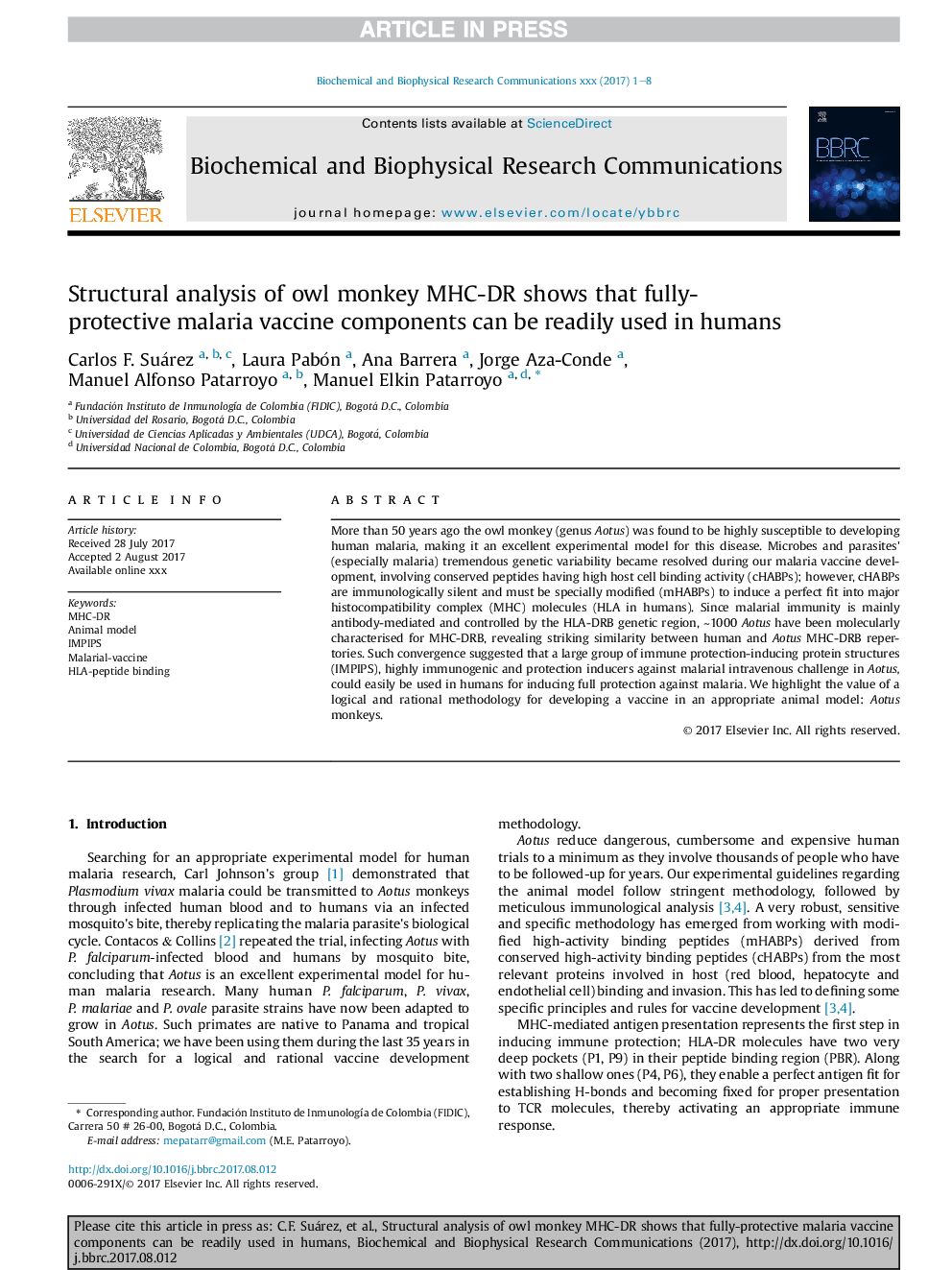| Article ID | Journal | Published Year | Pages | File Type |
|---|---|---|---|---|
| 5504774 | Biochemical and Biophysical Research Communications | 2017 | 8 Pages |
Abstract
More than 50 years ago the owl monkey (genus Aotus) was found to be highly susceptible to developing human malaria, making it an excellent experimental model for this disease. Microbes and parasites' (especially malaria) tremendous genetic variability became resolved during our malaria vaccine development, involving conserved peptides having high host cell binding activity (cHABPs); however, cHABPs are immunologically silent and must be specially modified (mHABPs) to induce a perfect fit into major histocompatibility complex (MHC) molecules (HLA in humans). Since malarial immunity is mainly antibody-mediated and controlled by the HLA-DRB genetic region, â¼1000 Aotus have been molecularly characterised for MHC-DRB, revealing striking similarity between human and Aotus MHC-DRB repertories. Such convergence suggested that a large group of immune protection-inducing protein structures (IMPIPS), highly immunogenic and protection inducers against malarial intravenous challenge in Aotus, could easily be used in humans for inducing full protection against malaria. We highlight the value of a logical and rational methodology for developing a vaccine in an appropriate animal model: Aotus monkeys.
Keywords
Related Topics
Life Sciences
Biochemistry, Genetics and Molecular Biology
Biochemistry
Authors
Carlos F. Suárez, Laura Pabón, Ana Barrera, Jorge Aza-Conde, Manuel Alfonso Patarroyo, Manuel Elkin Patarroyo,
